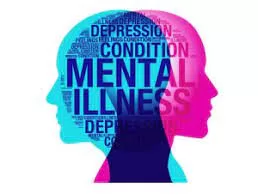A recent report published in JAMA Psychiatry has shed light on the alarming prevalence of mental disorders among young individuals aged between 5 and 24 years old. The findings underscore the severity of the global mental health crisis gripping our youth, with more than 1 in 10 individuals in this age group living with at least one diagnosable mental disorder.
Authored by Christian Kieling, MD, PhD, from Universidade Federal do Rio Grande do Sul, Porto Alegre, Brazil, and colleagues, the report draws from the 2019 Global Burden of Disease (GBD) study, analyzing data from 293 million young people worldwide. The study reveals that mental disorders account for approximately one fifth of all disease-related disability, emphasizing the significant burden on this population.
The prevalence of mental disorders among young people has doubled from early childhood to young adulthood, with anxiety disorders emerging as the most common, affecting 84 million individuals globally. Mood disorders, particularly anxiety and substance use disorders, show a steep increase from adolescence to young adulthood, highlighting the critical need for early intervention and support.
The COVID-19 pandemic has exacerbated the already soaring rates of mental health disorders among young people, prompting declarations of a state of emergency from leading medical organizations such as the American Academy of Child and Adolescent Psychiatry and the American Academy of Pediatrics. The pandemic’s toll on youth mental health underscores the urgency of addressing this issue on a global scale.
In response to these findings, experts advocate for tailored approaches to youth mental health screening, promotion, and prevention, recognizing the diversity of mental health challenges across different age groups and genders. Jeremy Veenstra-VanderWeele, MD, and co-authors from Columbia University stress the importance of targeting specific disorders during high prevalence developmental intervals, with a focus on gender-sensitive interventions.
Proposed initiatives include community- or school-based mental health programs that provide screening, education, and support for conditions such as ADHD and anxiety disorders in early childhood, followed by interventions targeting mood and substance use disorders during adolescence and young adulthood. This targeted approach aims to allocate healthcare and education resources effectively, addressing the evolving needs of young people at different stages of development.
While the report highlights the urgency of addressing youth mental health, it also serves as a rallying cry for policymakers, healthcare professionals, educators, and communities worldwide to prioritize mental health support for young people. By implementing evidence-based interventions and allocating resources strategically, we can work towards alleviating the global mental health crisis among our youth and fostering a healthier, more resilient future generation.
The study was partially funded by the Cundill Centre for Child and Youth Depression, with researchers disclosing various financial interests related to their work in mental health research and advocacy.












